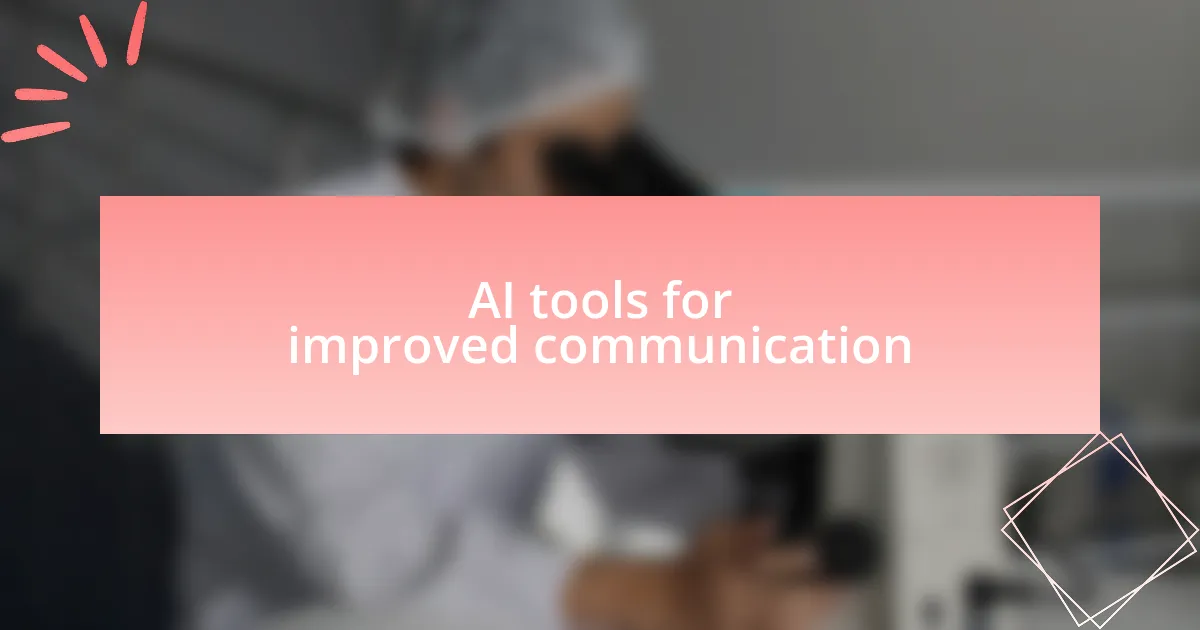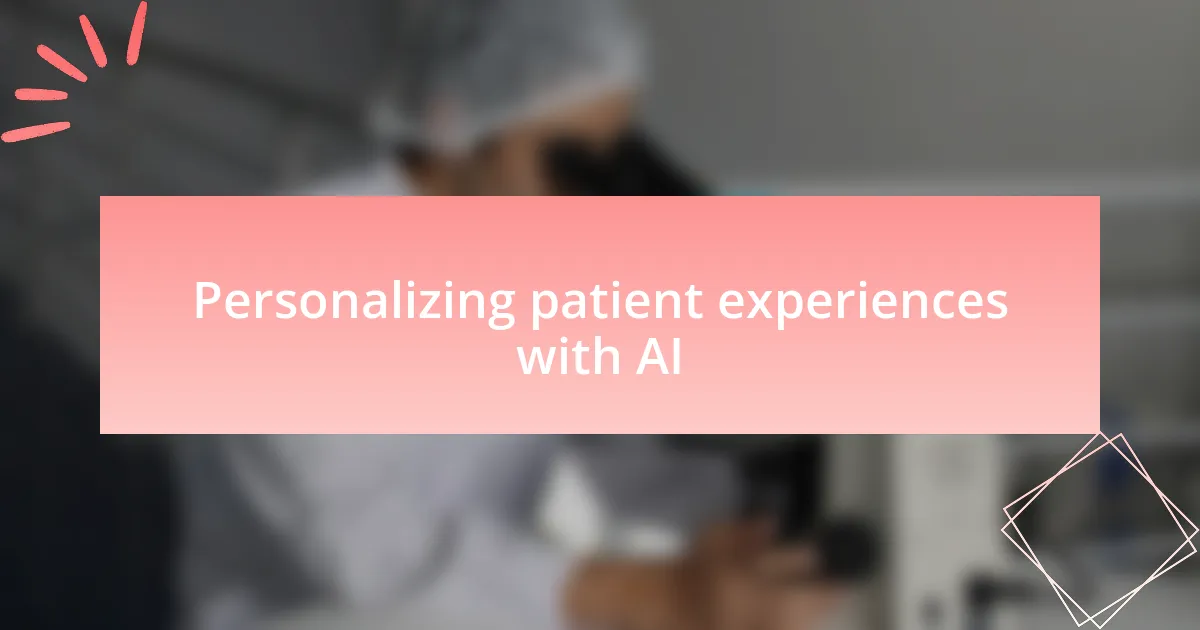Key takeaways:
- Healthcare innovation enhances patient care by leveraging technology to overcome barriers and improve accessibility, as shown through telehealth examples.
- AI tools, such as chatbots and real-time translation services, significantly improve communication and emotional engagement between healthcare providers and patients.
- Personalization of patient experiences through AI fosters trust and connection, making patients feel understood and supported in their healthcare journey.

Understanding healthcare innovation
Healthcare innovation is fundamentally about improving patient care through creative problem-solving. When I first witnessed a telehealth pilot project in my practice, I was struck by how easily patients connected with specialists without the barriers of travel. It made me wonder: How many more lives could we touch if we embraced technology to break down these barriers?
I remember a particularly poignant moment when an elderly patient, who had always been hesitant to seek treatment due to mobility issues, shared her relief at being able to attend consultations from her home. It was a small change that had a monumental impact on her quality of life. This experience highlighted the profound role that innovation plays not just in treatment, but in enhancing the overall patient experience.
At its core, healthcare innovation invites us to rethink traditional practices and address unmet needs creatively. I often reflect on the question: What if we could harness data and technology not just to streamline processes, but to truly understand our patients’ journeys? By fostering a culture of innovation, we can ultimately create a more empathetic and effective healthcare system that resonates with the real-world experiences of those we serve.

AI tools for improved communication
AI tools have completely changed how I communicate with my patients. For instance, I recently integrated a chatbot system that handles preliminary inquiries. Initially, I was skeptical, but seeing the relief on my patients’ faces when their simple questions receive instant responses has been enlightening. It’s like having a personal assistant that ensures I spend more time on complex cases rather than getting bogged down with routine queries.
Another powerful tool in my arsenal has been AI-driven translation services. I once had a patient who spoke limited English, and traditional methods left us frustrated. When we utilized AI for real-time translation during consultations, I could feel the tension lift. It was incredible to witness how much more engaged my patient became when she could fully understand her care plan. How often do we underestimate the impact of clear communication in healthcare?
Ultimately, these AI tools have not just enhanced my efficiency; they’ve transformed the emotional landscape of patient interactions. I find that my ability to connect with patients has improved, allowing for more meaningful conversations. As I think about future innovations, I wonder: what else could AI unlock in our relationships with our patients?

Personalizing patient experiences with AI
When I first began using AI to personalize patient experiences, I was astonished by how much we could learn about individual preferences and needs. A simple algorithm that analyzes previous interactions allowed me to tailor my approach, addressing my patients by name and recalling their specific health concerns. Imagine the ease my patients feel when they walk into my office and see that I remember their story. It creates a sense of trust and connection that is invaluable in healthcare.
I recall a patient who had been hesitant to seek treatment due to negative past experiences. By utilizing AI to analyze her previous visits, I discovered patterns that highlighted her anxieties. During our next appointment, I was able to address her specific fears directly, which made all the difference. The relief in her expression when she realized I understood her unique situation was profound. Isn’t it fascinating how something as simple as personalized attention can transform a patient’s willingness to engage in their care?
Moreover, the AI systems allow me to follow up with customized messages and reminders that resonate with each patient. For instance, I can send tailored wellness tips based on their medical history or preferences. When a patient reported feeling more supported after receiving a personalized reminder about lifestyle changes, it reinforced my belief in the power of AI. How often do we, as healthcare providers, have the opportunity to offer such individual care at scale?